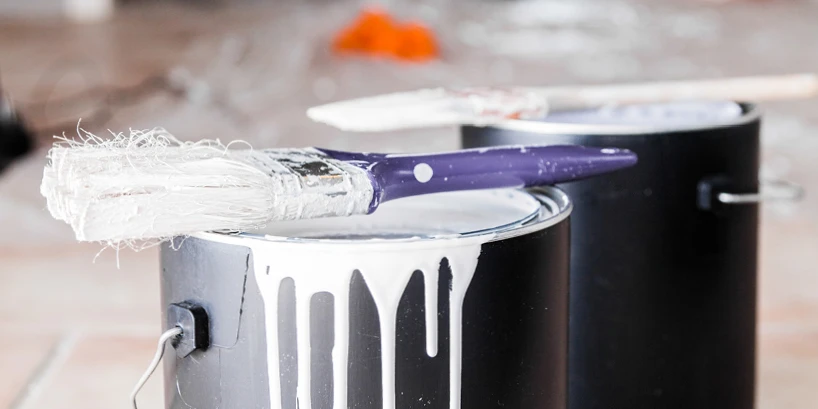How to Store Paint For Reuse

No matter how careful you are, over the years small chips and dings can start to appear on your walls and other painted surfaces. If you are lucky enough to have the leftover paint from past projects you may be able to simply touch up the affected areas without having to completely repaint, but your luck may have run out if the paint was stored incorrectly. Preserve the integrity and prolong the lifespan of your materials, with tips from the experts at Five Star Painting for the best way to store paint.
How to Store Paint in Four Easy Steps
1. Make it easy to identify.
There is little point in storing your leftover paint if you don't know which can it's in. Make it easy on yourself and take the time to properly mark the can with the following:
- The room or object the paint was used for.
- The name of the paint.
- The number of the paint.
- A swipe of paint on the lid, and one on the body of the can.
Write this information on both the body and lid in case one becomes damaged.
2. Choose your container wisely.
Your paint will last longer in a full container with less air. If you have less than one-quarter of a gallon of paint left over after your project, pour it into a smaller container for ease of storage and to preserve the integrity of the product. Glass canning jars or small plastic containers with a good seal work well, and will also allow you to view the contents.
3. Seal the deal.
Whether you store your paint in the original container or decant it into another, it's important to seal it well to prevent it from spoiling or drying out. Use these steps for best results:
- Clean around the rim of the paint can, removing as much paint residue as possible.
- Place a layer of plastic wrap over the top of the paint, and another sheet of plastic across the rim of the can.
- Replace the lid, and use a rubber mallet to gently tap your way around the edges until it is completely sealed. Avoid using a hammer which can damage the lid and disrupt the airlock. If you don't have a rubber mallet, place a block of wood across the top of the lid and hammer the block to create a seal.
4. Mind the temperature.
Store your paint cans, jars, or containers in a cool, dry area where there is no chance of freezing. Place on a shelf or other surface off the ground to prevent rust, and avoid sources of sunlight, heat, or moisture such as a boiler, water heater, or radiator. If no suitable storage solution exists consider adding a shelving unit to your home.
Tips for Reusing Leftover Paint
When it comes time to touch up your walls or furniture grab the appropriate container and refrain from shaking. While you may be tempted to start mixing it, you may contaminate the paint with any rust, dust, or debris that is on the interior of the can.
Open the container carefully and remove the layer(s) of plastic wrap and any "skin" that may have formed on the surface of the paint. If it is too thin to remove or you see other debris, strain the paint into another container to obtain a clean product. Once you have completed this step, stir the paint well to combine and apply as needed.
 Click to call
Click to call




